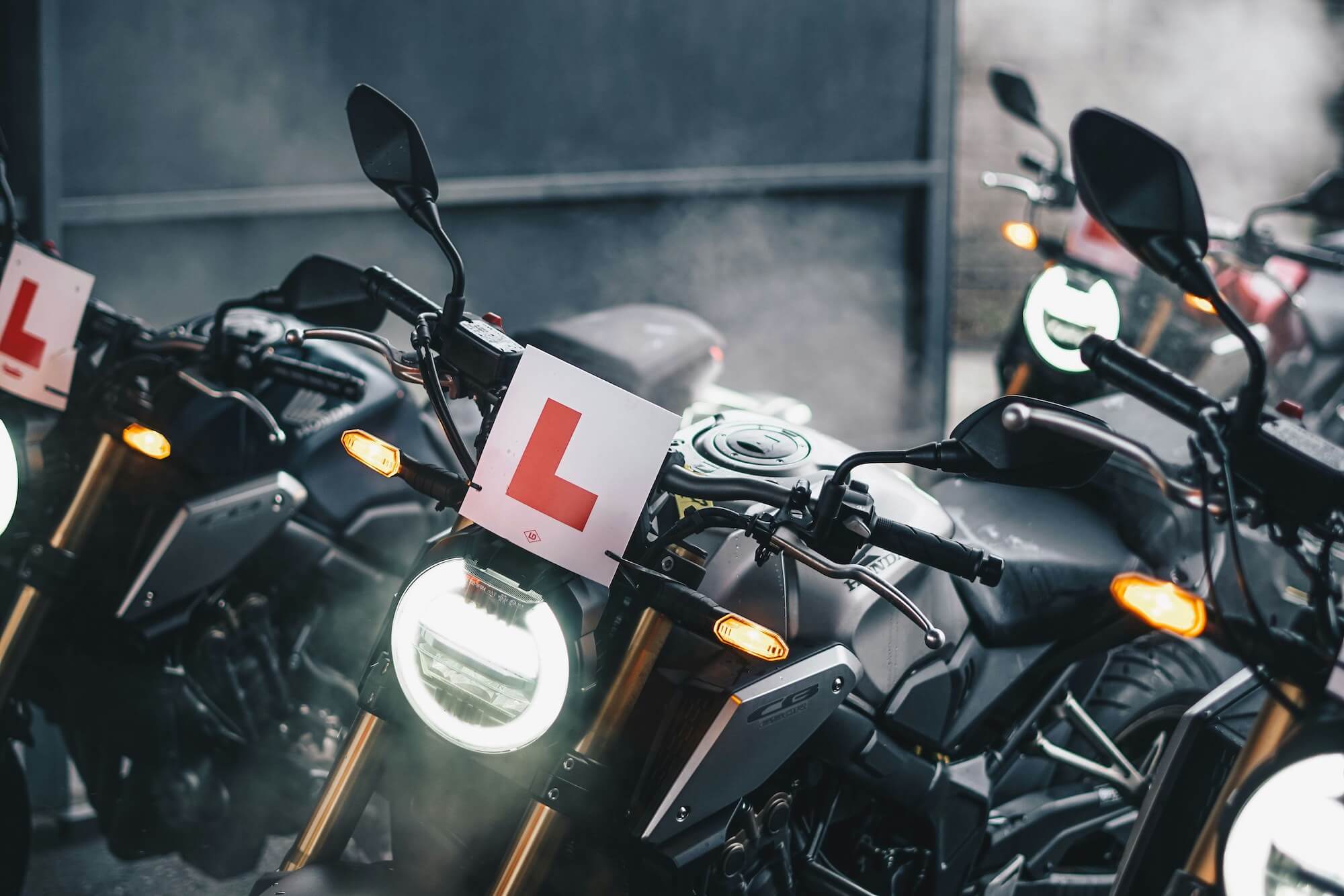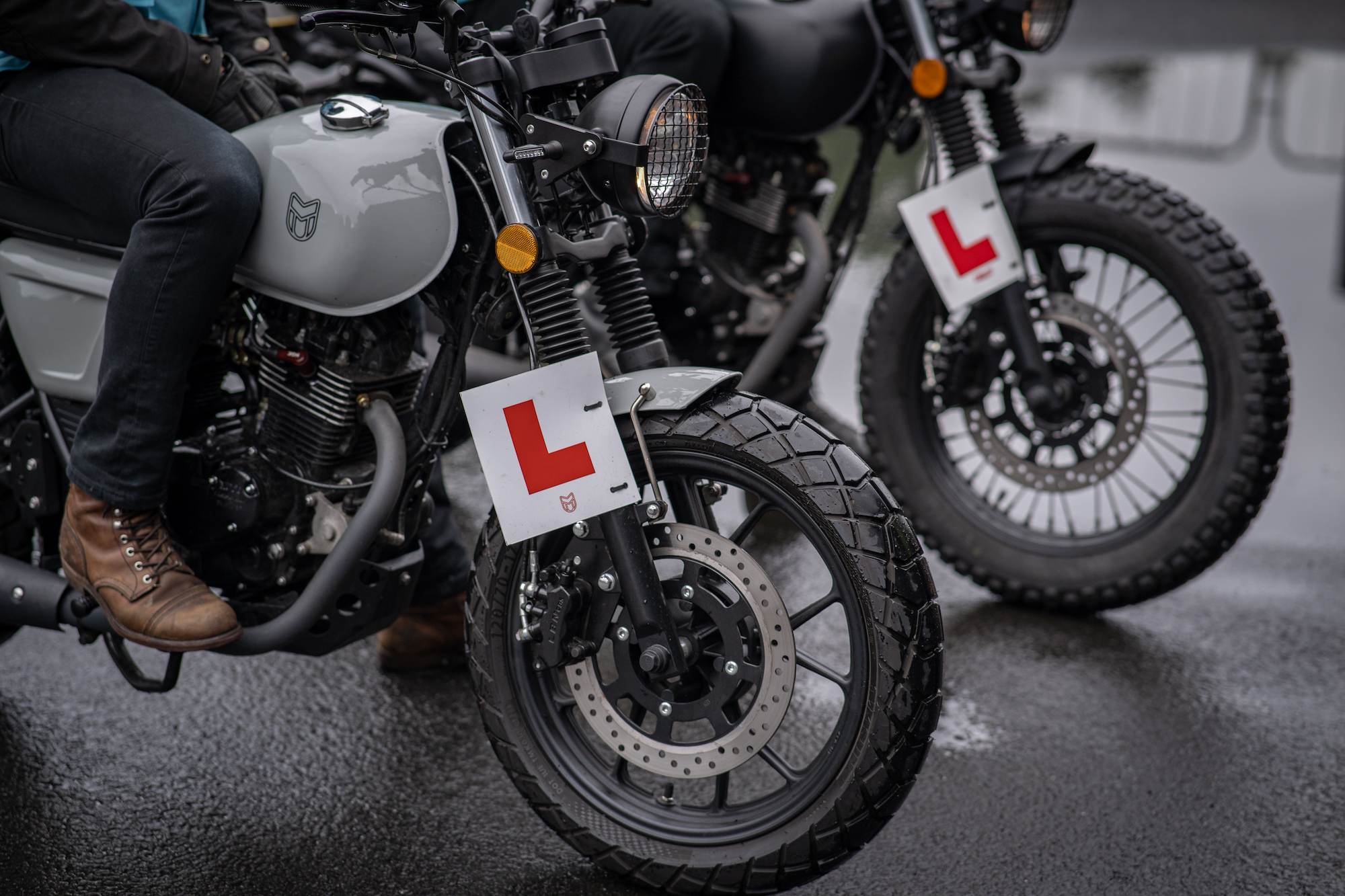back to the blog
L Plates on a Motorcycle: Where and When You Need Them

Olivia C · January 15, 2025
If you're a learner rider, displaying L plates on your motorcycle is a legal requirement in the UK. These plates alert other road users that you're still getting to grips with your motorbike. Here’s everything you need to know about when, where, and how to display L plates on your motorcycle.
What Is a Motorcycle L Plate?
An L plate is a square sign with a red "L" on a white background, showing that the rider is a learner. It lets other road users know the rider might need a bit more patience or caution. In Wales, instead of an "L," a red "D" (for "Dysgwr," meaning learner) can be used.
L plates are a legal requirement for anyone riding a motorcycle or scooter on a CBT certificate.
Do You Need L Plates on Your Motorbike?
Once you’ve passed your Compulsory Basic Training (CBT), and are yet to get a higher A-type licence, you can ride up to 125cc and will need to display your L plates on both the front and back of your motorcycle. This is so other road users know that you are a beginner rider and may need more space or time to navigate safely.
As a rule of thumb, if you only have a CBT, and haven’t got any higher licence types (including the AM, A1, A2 or full A-licence), you’ll need L plates.
But, once you get your full motorcycle licence test, you’ll no longer need to display L plates and can enjoy greater freedom on the road, such as carrying passengers and riding on big bikes.
The only exception is for mopeds up to 50cc. If you passed your driving test before February 1, 2001, you can ride a moped without L plates and don’t need to take a CBT course or the full moped test. If you passed your driving test after February 1, 2001, you need both a full car driving licence and to complete a CBT course. You can either pass your car test and then take the CBT, or take the CBT first and pass your car test within two years. After completing these steps, you can ride a moped up to 50cc without L plates.

Displaying Your Motorcycle L Plate Properly
You need to display L plates correctly to comply with legal requirements. You’ll need:
- Two L plates: One at the front and one at the rear of your motorbike.
- Clearly visible plates: L plates can't be obscured or blocked from view, and they should be mounted upright.
- Correct size and design: The L plates must conform to the official size and style specifications (178mm x 178mm with a red “L” on a white background).
You can read the full government guidelines on L plate sizing here.
How Long Can You Ride a Motorcycle on L Plates?
You can ride a motorcycle with L plates for up to two years after completing your CBT. After this period, your CBT certificate expires, and you’ll need to either renew your CBT (and continue on with L plates) or pass a higher motorcycle licence test (and ditch the L plates) to continue riding legally.
If you don’t pass your full test or renew your CBT within the two-year window, you won’t be allowed to ride on public roads.
How to Fit L Plates on a Motorcycle
Fitting L plates on your motorcycle is pretty straightforward, but important. Follow these tips to ensure they’re secure and visible:
- Front Plate: Attach the plate to the front of the bike, often near the headlight or on the front mudguard. Some bikes have a bracket specifically for this.
- Rear Plate: Secure the plate to the back of the bike, usually on or above the number plate. Make sure it doesn’t obscure your licence plate.
- Fixings: Use sturdy fixings such as screws, bolts, or adhesive pads. Don’t use flimsy materials like tape!
- Check Visibility: Make sure the plates are positioned so they're clearly visible from a distance, and check they're standing upright.

Rules When Riding With an L Plate
Riding with L plates means you are riding on a CBT certificate, which comes with specific rules such as:
- Motorway Restrictions: Riders with L plates aren't allowed on motorways.
- No Passengers: Carrying passengers is prohibited while riding with L plates.
- Vehicle Restrictions: You can only ride motorcycles or scooters up to 125cc with a maximum power output of 11kW (14.6bhp). If you’re 16, this is limited to 50cc.
- Helmet and Gear: The minimum legal requirement is an approved helmet, but realistically you need full protective gear to stay safe and comfortable on the road.
What Is the Penalty for Not Displaying L Plates on a Motorcycle?
Failing to display L plates or displaying them incorrectly is considered a traffic offence. The penalties include:
- A minimum £100 fine.
- Three penalty points on your licence.
- Potential invalidation of your insurance, since riding without proper L plates could breach your policy terms.
- Potential towing of your bike.
We’re sure you’ll agree - it’s not worth it! So make sure your L plates are correctly displayed and in good condition before every ride.
FAQs
Do You Need a Front L Plate on a Motorcycle?
Absolutely! A front L plate is necessary for learner riders. It should be clearly visible to others, so they know you're still learning.
Do You Need Two L Plates on a Motorcycle?
Yes, you need both front and rear L plates on your bike. It's a requirement for learner riders in the UK, so make sure you have both in place.
Where Is the Best Place to Put L Plates on a Motorcycle?
The best place to put your L plates is where they’re easily visible, both at the front and rear. They should be upright and not obstructed, so other road users can spot them from a distance.


